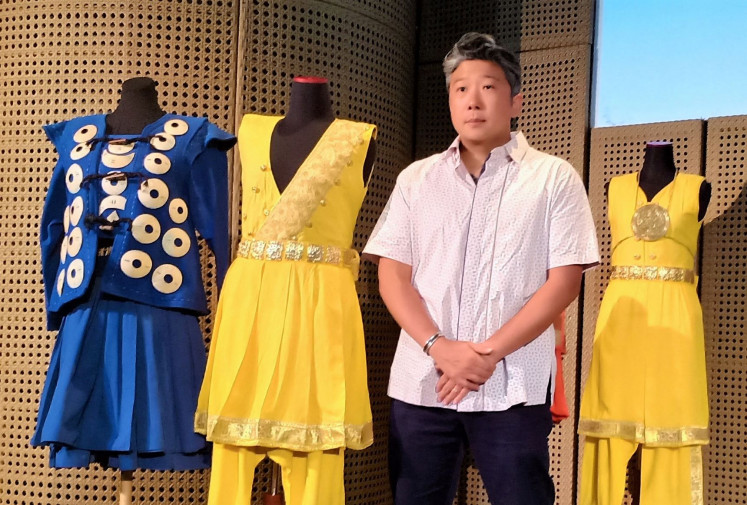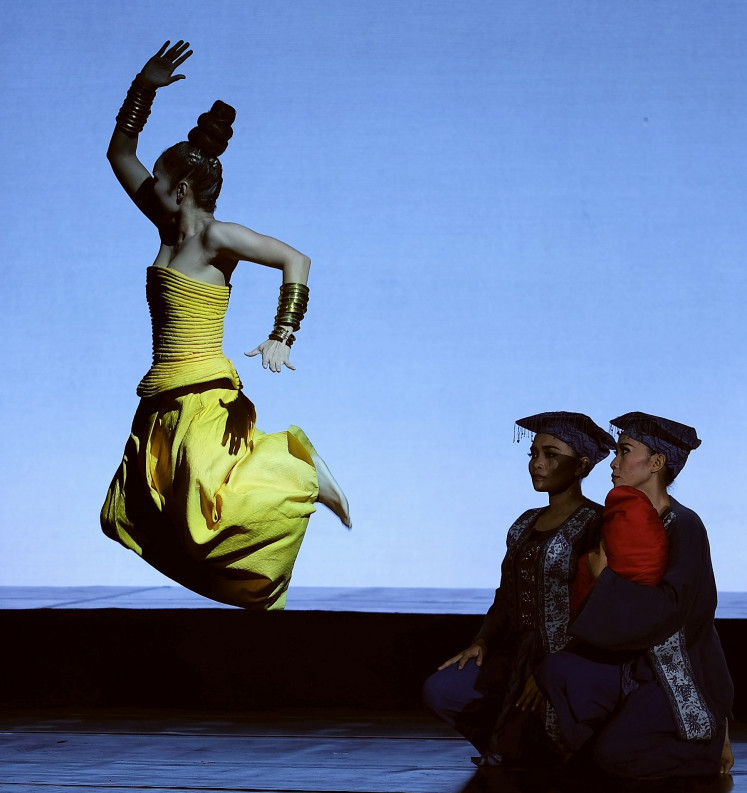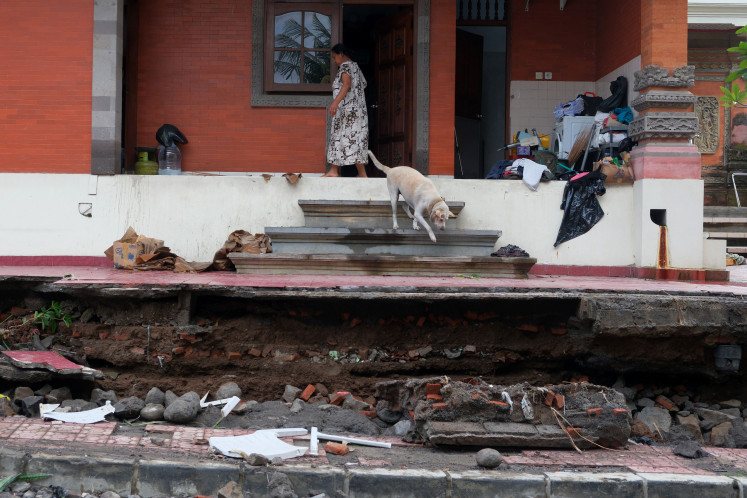Popular Reads
Top Results
Can't find what you're looking for?
View all search resultsPopular Reads
Top Results
Can't find what you're looking for?
View all search resultsAirlangga Komara: The man behind the majestic costumes of ‘I La Galigo'
On a world-class production, one would expect every stitch and thread – even on the extras’ costumes – to be perfect.
Change text size
Gift Premium Articles
to Anyone
T
he world of showbiz is certainly as far removed as can be from the dull grittiness of reality, this much is certain. In every artistic production, every aspect is made grander, exaggerated for flair and dramatics, including the costume department.
On a world-class production, one would expect every stitch and thread – even on the extras’ costumes – to be perfect.
Such can be seen in I La Galigo, a musical theater production derived from the Bugis epic creation Sureq Galigo.
After making its world premiere at the Esplanade Theatres on the Bay in Singapore in 2004, the Robert Wilson-directed I La Galigo has traveled around the world before coming back home to Jakarta for a four-day performance at the Ciputra Artpreneur theatre from July 3 to 7.
Artisan: Textile design and costume coordinator Airlangga Komara poses with the show's handmade costumes. The fabrics alone took up to six months to complete. (The Jakarta Post/Josa Lukman)Since its conception nearly two decades ago, the role of the overseer in the costuming department has been entrusted to Airlangga Komara, the son of renowned designer Josephine “Obin” Komara.
He revealed that the staggering number of costumes were necessary for backups and the long production time.
“We always make a minimum of two sets for one costume, and this comes into play when one set is in the wash and also when there is wear and tear during performances,” Airlangga told The Jakarta Post.
Still, even when that number is halved, there is still quite the number of costumes on show during the performance.
According to the production’s movement coach, B. Kristiono Soewardjo, one cast member goes through 15 costume changes over the course of the play.
“I remember that after creating those 300 sets, there were some requests to create even more copies. I don’t remember the final number, but one cast member can play multiple roles, or even the same role but in different scenes. Hence the need to change.”
Airlangga’s involvement in I La Galigo has been remarkably thorough, with he and his team accompanying the cast during their rehearsals at the Bali Purnati Center for the Arts, eight hours a day.
“When we struck the deal with Wilson and Purnati, we can say that we joined in their experiences. We observed the movements of the actors, the way the musicians look for inspiration. Wilson wanted everything to be natural and organic, and from there we set out to use organic materials,” he said.
One part of the process included presenting Wilson with an array of traditional Indonesian textiles – from songket (traditional gold-threaded woven fabric) to batik and East Nusa Tenggara’s tenun (handwoven cloth).
As for the costume designs themselves, Airlangga said it was important to respect the culture of South Sulawesi, so his team met with cultural experts to learn the complexities of clothing in Bugis culture.
He pointed to a yellow costume adorned with gold, noting that the color could only be worn by royalty, whereas the embellished set in rich blue signified the status of a warrior.
While I La Galigo is strictly Bugis in nature, the costume department was also influenced by other Indonesian cultures.
Airlangga and his team conducted extensive research to find something that could represent Indonesian culture in its entirety, although Bugis culture is still the dominant force.
“Wilson is so in love with Indonesian culture that we opened the discussion by sharing with him Indonesia’s cultural heritage in full, before narrowing it down to particular textiles he liked for the stage,” Airlangga said.
The team also engaged in similar discussions to create their own take on Bugis clothing. “Our signature at BINHouse is that we produce our own materials from the individual threads to the complete textile,” he said.
Following this ethos, every costume in the production is entirely handmade, with each textile taking around six months to produce according to the specifications.
The costumes were only made once the textiles were finished, with production continuing into the last minutes of the preparations. An entire cadre of tailors was also on standby for on-site alterations.
“It’s why we were quite surprised when we were in talks with [co-producer Restu Imansari Kusumanigrum] and were invited [to join the production],” Airlangga said.
“We’re a medium-sized company that doesn’t mass produce our pieces, so it was a challenge to find period-appropriate organic materials for the stage, where people are used to materials like polyester and lycra.”
He said his team had some previous experience creating costumes for movies and for fashion collections but that the parameters were a little different for the stage.
“Wilson appointed German costume designer Joachim Herzog to act as a bridge between himself and our team to discuss the intricacies of theatrical costumes,” he said.
“People familiar with stage costume design know several methods like using velcro to minimize changing times without sacrificing the silhouette of the outfit.”
A costume’s silhouette is key in Wilson’s productions, and he has worked with major designers like Armani.
As for the costumes themselves, Airlangga said many of the original costumes from 2004 had undergone alterations or been replaced due to the wear and tear of many shows. Several pieces have also had to be repaired or replaced because of sweat or makeup stains.
Despite the changes over the years, Airlangga said the central idea behind the costumes was still intact.
“My team worked to Herzog’s directions and Wilson’s approval, I’m sure the designs are still maintained to this day.” (ste)













